With the development of economy and progress of industrialization, more and more machine-made cloth has been taking the place of calico, home-made and hand-imprinted and dyed in the country. Therefore, blue calico, as a work of folk art, has been gradually losing its practical value.
Indigo Textiles: Technique and History, Gosta Sandberg
What do you see in this photo? Japanese yukata (cotton summer kimono) hanging on a line perhaps? It wouldn’t be an unreasonable guess based on the color and pattern, especially if you were just looking at the rolls of yukata fabric in Amy Katoh’s Blue & White store, like I was the other day. Hand-dying is a dying art everywhere, and we are lucky when people like Amy step up to help keep it alive.
But the answer to my question above is actually not Japanese at all – it is Chinese nankeen, stencilled and dyed in an indigo bath. Originally, the word nankeen was used to indicate the very dense and unrefined hand-woven cotton fabric itself, but over time has come to be used interchangeably with its patterned and colored counterpart. Often referred to as blue calico, it was the main component of peasant clothing in China for centuries and in its plain form came to be an important export. A staple of British clothing from the late 18th century onwards, any Jane Austen fans among my readers will recognize it as a common fabric used for half boots worn for walking, as well as for mens breeches and pantaloons – the modern-day equivalent of chinos. Even its signature pale yellow color is often mentioned.
Ironically, while the upper classes in Europe were wearing nankeen, in China it was the fabric of the rice farmers, who used it for warm padded winter clothing. In Indigo Textiles: Technique and History, Gosta Sandberg writes “The jacket of the Chinese rice-farmer has been coloured with indigo since time immemorial. The reason for this is said to be that cloth dyed with indigo is many times stronger than undyed cloth and that it keeps insects and snakes at a distance, which is a considerable advantage for those working in open fields.” I don’t know if that is actually true, but it is consistent with work clothes in many cultures around the world, including our very own Levi’s.
Enter into our story – and there is nothing I like better than a good old-fashioned expat tale – Claire Russo and Liza Serratore, the founders and designers of LuRu Home, a new-ish textile based home design company working with modern versions of nankeen, based out of Shanghai. Selling pillows, napkins, place mats, tea towels and bags, all made from the custom hand dyed fabric in their versions of traditional Chinese patterns, it is good to see others taking up the banner of preservation, while innovating at the same time.
Liza and Claire had been friends since high school and kept in touch, planning to go abroad for work in response to the poor economy in the United States. After a few twists and turns, both ended up in Shanghai. One day they came across bits of old blue and white Chinese fabrics that they found in a tiny shop at end of long alley way – one of those magical moments that if we are lucky, we stumble across a version of, sometime in our own lives. The store was jam-packed with textiles, many sun bleached around the edges, and they came home with a few individual meters, recent but vintage. Their original impetus was to make things for their own apartment, and then for gifts, and from there the demand began to grow. They found they had passion for the fabric and as they investigated the printing process, a desire to rejuvenate the industry and bring patronage back to the artist.
The technique for making nankeen is a rice paste stencil resist technique almost identical to that of Japanese katazome. Just like the two countries currently arguing over the Senkaku Islands, they also argue over whose technique it was first. Frankly, I think it truly originates elsewhere in Asia, but I am not about to enter the scrum.
Does it look familiar? Antique Japanese katazome.
Both techniques use a paste glue to cover the open patterned area of a stencil, keeping it from absorbing the dye. In Japanese these stencils are called katagami – and I have written about them as decorative devices as well as a functional ones before. The Chinese nankeen artists do all their screen cutting by hand using simple craft paper that has been oiled. I can’t help but hear their Japanese counterparts whispering in my ear “They just use plain craft paper?” and the Chinese reply being “Why do they bother glueing all those layers of washi paper together with persimmon extract? Boy, that is a laborious waste of time!” While the Japanese use rice paste, the Chinese use soybean and lime paste mixed with water.
The base cotton is no longer hand loomed, but it is still very size limited based on the traditionally sized dying vats. It is also quite difficult to work with screens beyond a certain length so the largest screen possible is 32 inches and the rolls of fabric are 12 meters long. This automatically insures that all LuRu Home’s pieces are small batch made and variations are part and parcel of the product, depending upon the whims of the dyer and even the weather for drying.
The fabric is finished by using frosting-style knives to scrape away the paste after printing and then the fabric is put through a wash cycle with no soap and dried.
Their patterns have been inspired by historical patterns in An Overall Collection of China Blue Calico Vein Patterns compiled by Wu Yuan Xi, although not everything in the book is a traditional pattern (zebra anyone?). While Claire and Liza want to starting designing their own prints, the nankeen artisans will have none of it until the women build up more guanxi (relationship currency).
They have been extrapolating and changing the old prints and ironically that has helped them build guanxi as it shows their respect and appreciation for the process. A perfect example is the Flower pattern, which was too small and tight as it appeared originally. They enlarged the size and added white space to up its graphic punch. So for now, they are going to continue playing with tradition and plan to introduce a new pattern every season, which is twice a year, by adding one and pulling one, keeping 6-7 prints available at all times.
Their gorgeous website shows all their products and they also have a lovely lookbook with great styled shots. This outdoor view, also shown above previously, is my favorite.
I’m dying for a few of the adorable tea towels, pun untended! They make great gifts too.
So now for the fun part! Liza ad Claire have generously offered one 13 x 22 lumbar pillow (insert included!) in one of their four most popular patterns On The Fence, Babyteeth, Dot Dot Dot and Flower – the giveaway winner’s choice. All you need to do to enter the giveaway is leave a comment below. If you like LuRu Home on Facebook, I will enter you in the giveaway a second time, doubling your chance to win. They can ship to the winner anywhere in the world as they have stock in both the USA and China. The giveaway closes Monday night at 12 EST. I am crushed, of course, that I can’t enter myself!
Their pillows look great styled with other indigo and blues, as seen here at Nicky Kehoe…
…as well as with an assortment of other colors, like here at Black & Spiro.
Although record prices are being set for fine antique at auctions by wealthy Chinese looking to repatriate lost treasures, the locals LuRu works with are a bit bewildered by the women’s’ fascination with nankeen. Anything folk art based is undesirable these days in China. Louis Vuitton or (even Luois Vitton) is what is hot. But Claire and Liza have stiff competition from other buyers in procuring their fabric. From whom, you may ask? Can you guess?
The Japanese!
Image credits: All images credited to LuRu Home or the publications listed with the exception of #2 (me) and the 19th century fashion plates from Lady’s Repository Museum.



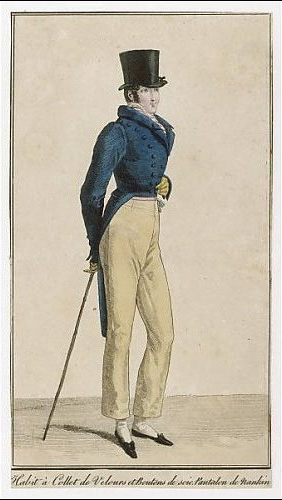
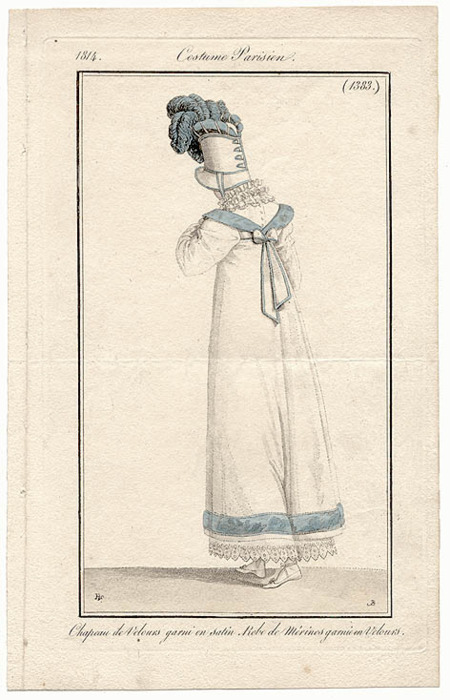













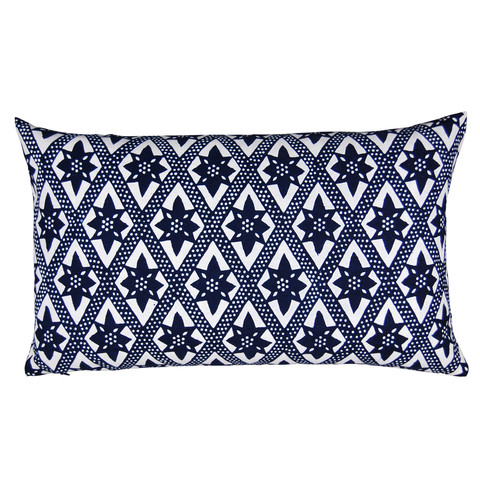
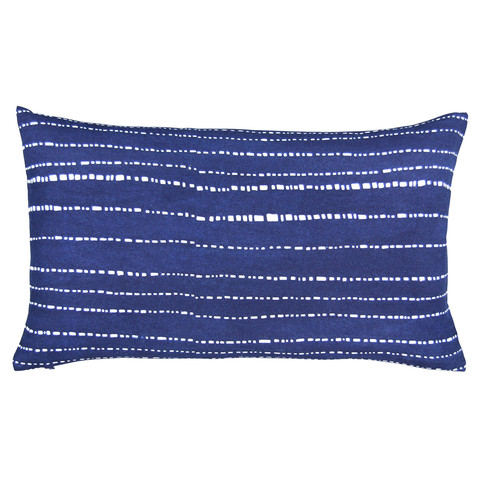
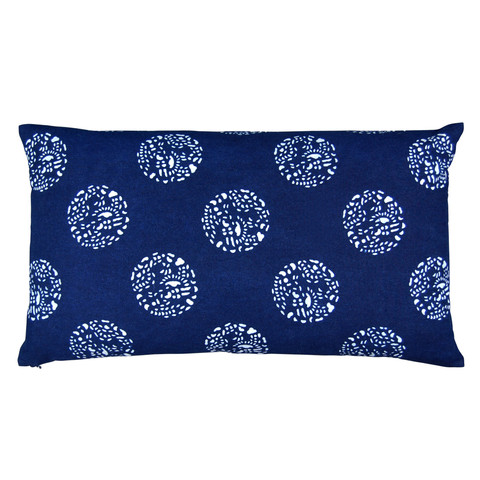
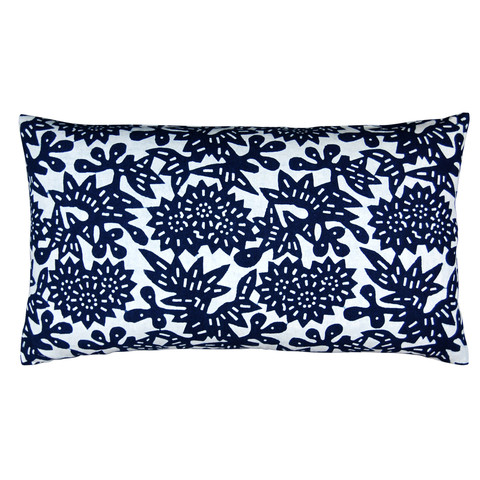
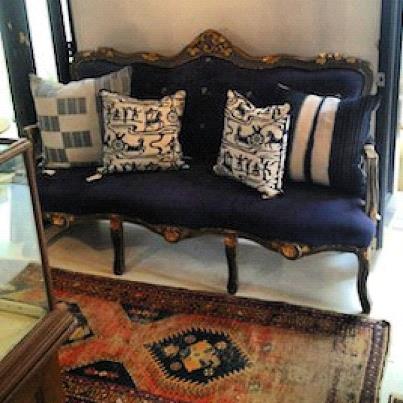

Now, wouldn’t that go perfectly with the blue and white runner I just finished?
Beautiful! I’m thinking about how I can incorporate this in my decor. They have a beautiful website – very inspired!
I think the blue and white Asian theme and Nankeen style is crying out to be introduced to a Cornish seaside home.
Thank you for the interesting history ! Love the colors and prints !
I have just the place …. Interesting post.
Nice!
Love, love, love the website and the story….depending on which color scheme I choose for my new daybed/office a few of these pillows could be perfect. Alternatively, they might work on the kitchen bench or for table linens. Thanks for sharing.
Really,really like that On the Fence pillow so I’ve also Liked LuRu Home on FB :)! And while you’re on the topic of indigo I’ve discovered a blog (in English) that I know would interest you- http://japanesetextileworkshops.blogspot.jp/
I think one of those really must go on the sofa in Kiawah, don’t you! (I’m thinking baby teeth perhaps)
{and of course I liked them on Facebook as well}
Love the colored pillow bench. please enter me in the giveaway! thanks.
Love love love…. why isnt there a button for that hmm? Love the crispness of the blue and white and blown away but the bounty of colours! .. off to share another great read!
I fell in love with indigo blue after moving to Japan! These fabrics are beautiful…love knowing the history and labor intensive process of creating them.
I do so miss Blue and White in Azabu, Amy is such a sweatheart. I stumbled across some beautiful fabric pieces which I believe are supposed to be used to tie around the head, but make great napkins, which I bought from Amy before we left. I have so many beautiful scraps of various types of indigo dyed fabrics, some new some very old, one day I intend using them somehow. Love the LuRu store and those cushions, can I be lucky twice? Remember Zak and Fox? As always, a great piece Jacqueline. x
I have visited blue and white once on a trip to Japan and own several of Amy Katoh’s books. I just love her approach.
Funny enough, the reasons mentionned for the use of indigo (strenght of textiles, keeping bugs away) is also mentioned about japanese textiles; it has some truth to it.
Having lived in both Taiwan and Japan and spent time in China, I was laughing when you imagined what they would say about each other’s ways: I have had some real life conversations that included just that sort of thing. Informative posting, and very pretty fabrics, indeed.
Love the contrast of blue and white with antiques. I enjoyed the info on the process of making the fabric.
You always find the best sources….
I love everything at Blue & White and love the pillows as well. Gorgeous.
I so love all of these patterns and fabric. I’m consistently amazed with your knowledge and sourcing. Fingers crossed for a big win!
These patterns are beautiful – the story behind them makes them that much richer. I’ve recently picked up zentangle: our patterns are reminiscent of some of these patterns.
I find Indigo things so soothing, love the idea of mixing indigo patterns from around the world
Fun post! The technique and process are fascinating!
Hi! I shared your blog with a friend recentl and this is what she wrote about Tokyo Jinja:
“Yes, I LOVE her web site.. So insightful and full of great info and photos. Makes me want to redo my living room and make it more antique looking.”
Love it! Would love to use some of it in our new home in San Diego.
Love the history that you give with your posts. Not only is your site wonderful to look at but also a lesson in my heritage. Thank you.
Beautiful. Love these fabrics. Added LuRu to my bookmarks bar.
Thank you for this comprehensive and informative post! You are a wonderful teacher. And thanks for sharing Liza and Claire’s story with us. As an independant shop owner, I admire what they are doing. Too bad I’m not on FB, so just one chance for me. Fingers crossed ~
Cheers,
Loi
great story! and I love the pic of the long table with the blue and white, such a wonderful eye for the aesthetically pleasing! My eyes are smiling.
Ah!!! Who wouldn’t want to chat up a friend with a glass of wine on that lovely patio with the blue and white fluffy pillows! Once again, an outstanding post! Thank you for being so totally inspiring!
Loved the fabric! Just beautiful.
The blue and white is patterns are some of my favorite things about Japan. I have accents of it all over the house – mostly in the kitchen. But I could start with accents of pillows too! Beautiful!
That outdoor dining pic is exactly what I want in my new outdoor patio in Spain!! I love navy blue and those patterns on the pillows/ napkins are beautiful!!
These are beautiful! Can’t wait to try some rice paste resist dyeing of my own. Love the idea of using just plain craft paper. So practical.
Like protein is the building block of life, blue and white is the building blocks of fashion.
I love the patterns and most of all I love blue and white. Beautiful!
Gorgeous! Always learn so much from reading your posts. Thanks for the artistic lesson and another good recommendation!
Ready to take the plunge…blue for the cape!!! Love the pics and you know I love the fabrics!!!
Beautiful! Would love to win one for my own!
Plans for my redecorated bedroom cry out for one of these pillows! Appreciate all the information you pass on to the readers of your blog.
Love these textiles! And your wealth of
knowledge is always amazing!
Wonderful textile designs. Thanks for another interesting post.
These are so wonderful!!!!
Love this post and the pillows!
Love the blue and white! Have a small collection of blue and white Mexican pottery, now working on my Japanese collection, would love to start adding in some textiles!
Beautiful textiles designs!! Informative post – thank YOU!!
Liked on Facebook! Love the pillows!
The Indigo blue is most of the beautiful blue tints. If you look at handmade fabric or thread coloured by indigo you can feel the spirit of nature and years of dying history which has led this craft to excellence. If I look at this amazing handmade articles I see also great skills of craftsmen. All of these products tell us own fairy tale…Thank you, you make world more beautiful !!!!
I was just saying that I need to buy some new pillows and voila – your blog! I will definitely visit their website. Thank you for the tip!
Very interesting!! Thanks.
Love the blog and love the indigo blue!
All of them are beautiful! And love your Blog Jacqueline.
You know how I feel about blue and white! (love)
Thanks for such an informative and beautiful post – those prints are gorgeous, just gorgeous!
The giveaway is now closed. Please feel free to leave other comments about LuRu Home. Thank you!
great prints (http://iseeprintseverywhere.wordpress.com)
Painted Staircase…A Decision Made? | Tokyo Jinja
[…] Antiques in Bethesda, MD. You may recall that he was the winner of the LuRu Home pillow from the giveaway I did this spring. Loi’s home is simply spectacular, as are his gardens, and you can read […]
Great goods from you, man. I have take into account your stuff prior
to and you’re just extremely great. I really like what you have bought here, certainly
like what you are saying and the way in which in which you
are saying it. You make it enjoyable and you still take care of to keep
it smart. I can’t wait to read far more from you. That is really a
wonderful web site.
Hi, Lady/ladies
Is there anyway I could learn to do this?
In order for your score to be meaningful the
banks would prefer to see at least 3 items on the credit with a recent 12 month history with no late payments.
As a result, their bankruptcy is dismissed and they are
still stuck with their debt. However, within a 48
hour period Lynn’s condition degenerated so that I took her to Sturdy
Memorial Hospital in Attleboro where they declared
her mentally incompetent and placed a police officer outside
her door. It is mixed with other minerals and chemicals and used as
an inert volume and weight filler in drilling mud. Department of the Treasury’s Troubled Asset Relief Program
(TARP) on October 28, 2008; an additional $10 billion on January 9, 2009; and $20 billion on January 16,
2009.